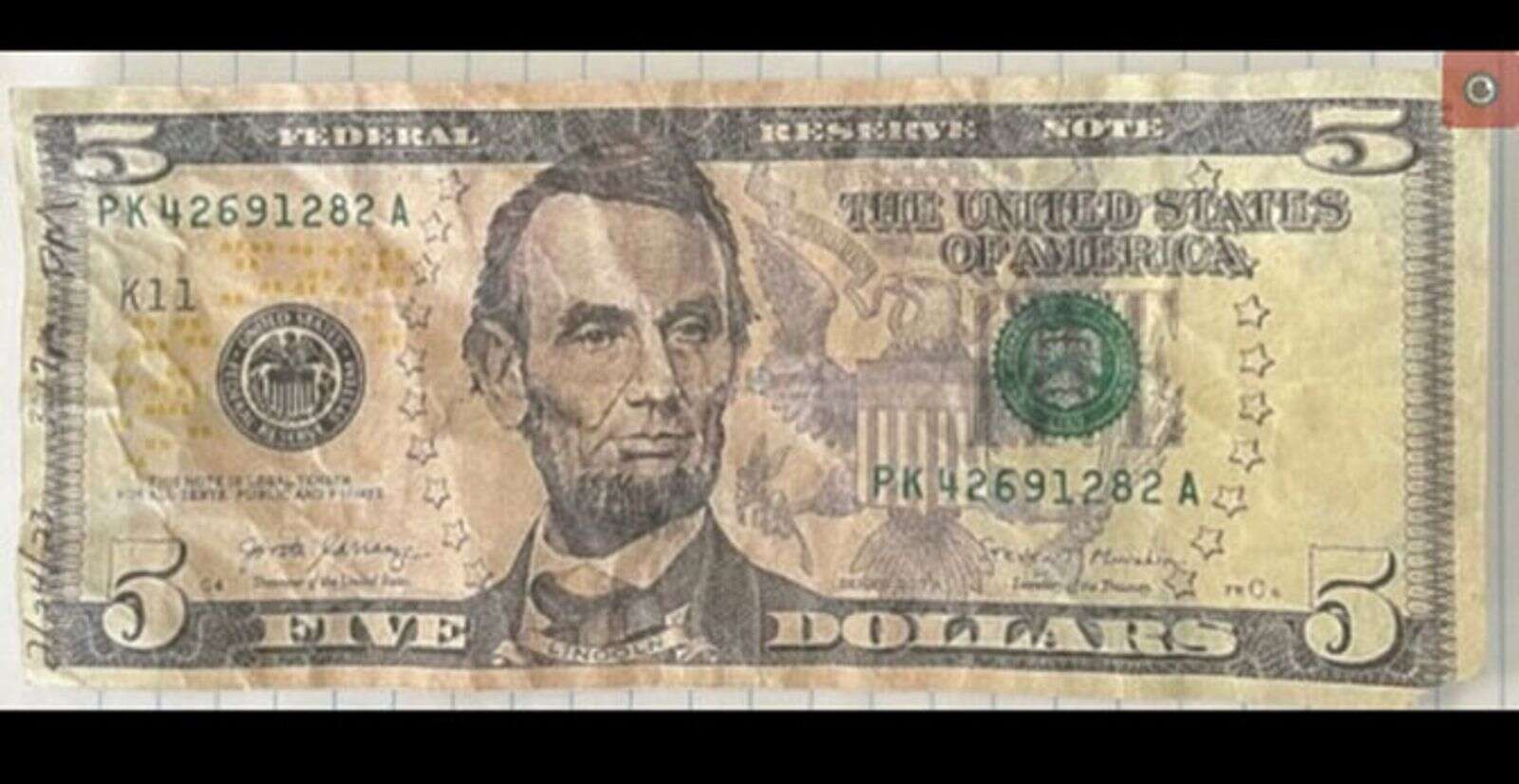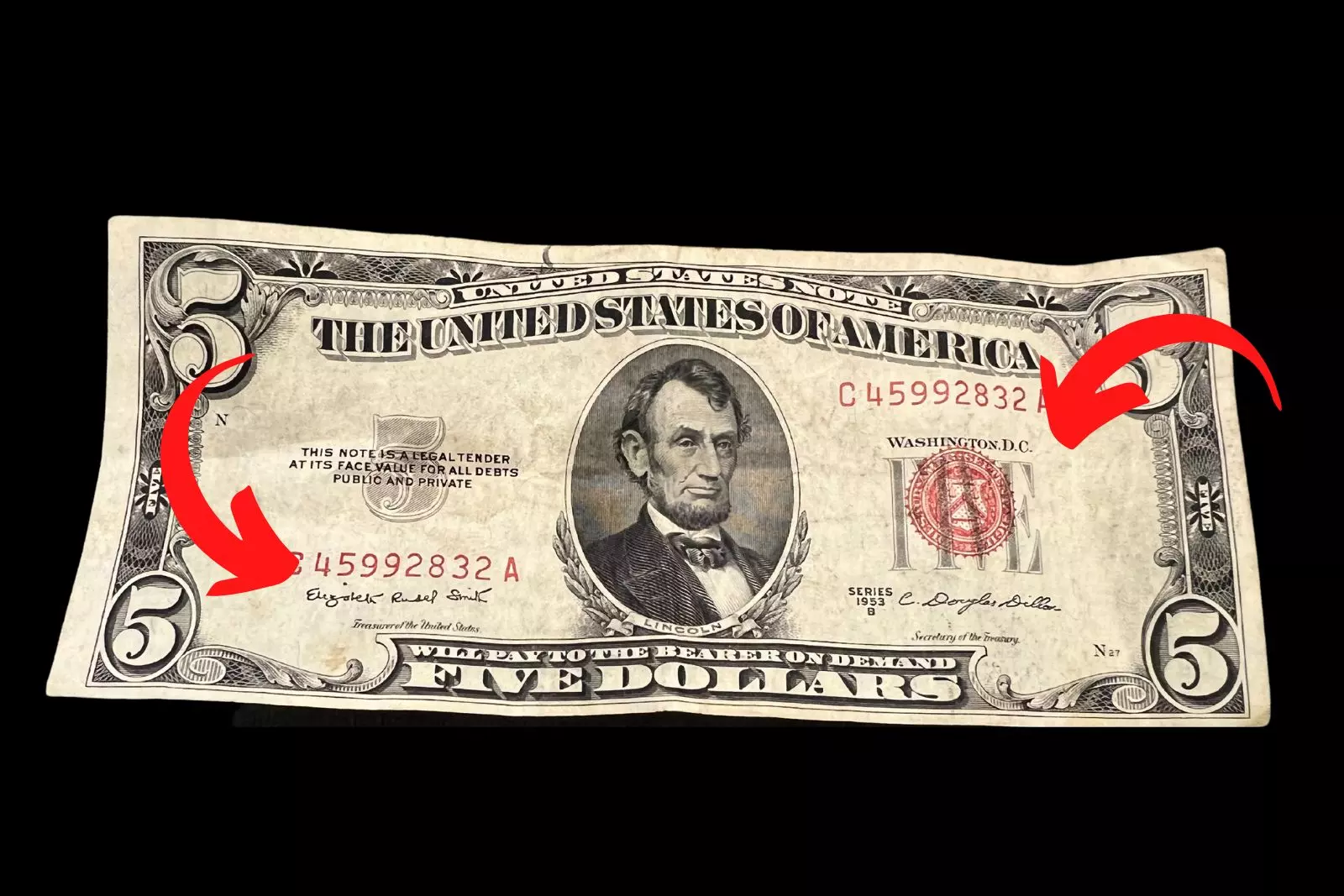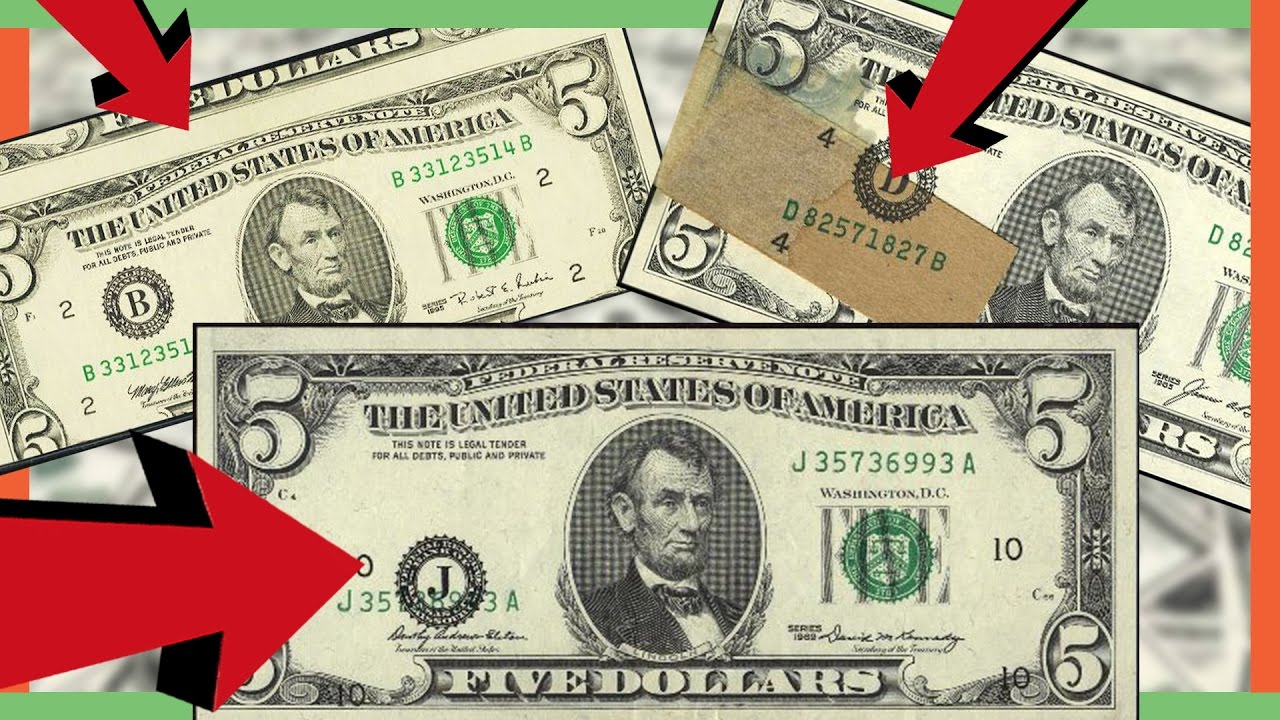If you’ve ever wondered, “Who is on the 5 dollar bill?” the answer is President Abraham Lincoln. The 5 dollar bill, commonly referred to as the “$5 bill” or “five dollar bill,” features his iconic portrait on the front. This portrait of Abraham Lincoln has been gracing the obverse of the $5 bill since 1914, making it a symbol of American history and leadership.
In addition to Lincoln’s face, the reverse side of the note features an image of the Lincoln Memorial, one of the most recognizable landmarks in the United States.
Abraham Lincoln, the 16th president of the United States, is widely regarded as one of the most revered leaders in American history.
Born on February 12, 1809, in Kentucky, Lincoln served as president during one of the most turbulent times in American history.
His presidency, which spanned from 1861 until his tragic assassination in 1865, was defined by his leadership through the Civil War, his role in abolishing slavery, and his efforts to preserve the Union.

So, when you hold a 5 dollar bill, you’re holding a piece of history. Whether you’re using it for a simple purchase or collecting it as part of your money collection, the 5 dollar bill has a rich legacy.
Let’s explore some interesting facts and secrets about this bill and its connection to the man whose image is on it.
Early Five Dollar Bills: A History Of Change
The five dollar bill hasn’t always featured Abraham Lincoln. Before the 1914 series, a variety of historical figures were portrayed on $5 notes, making the history of the bill quite fascinating.
During earlier series, notable figures like Alexander Hamilton, President Andrew Jackson, President James Garfield, and President Ulysses S. Grant appeared on the $5 bill.
Additionally, other important personalities such as Chief Running Antelope and Civil War General George H. Thomas were depicted on earlier bills.
In the early 20th century, changes to currency designs were made to reflect a more consistent portrayal of American leadership. As a result, the $5 bill, along with other denominations, underwent several revisions.
Lincoln’s inclusion on the $5 bill was part of a broader move to standardize the appearance of U.S. currency.
The Lincoln Memorial on the Reverse Side
While the portrait of President Lincoln dominates the front of the $5 bill, the reverse side is equally iconic. It features the Lincoln Memorial, a tribute to the president’s legacy.
This structure, located on the National Mall in Washington, D.C., was dedicated in 1922 and serves as a symbol of Lincoln’s role in shaping the nation.
If you closely observe the engraving of the Lincoln Memorial, you’ll notice something interesting. The memorial’s friezes include the names of 48 states, a reflection of the political landscape at the time of its dedication.

The names of 26 states are engraved on the upper frieze, and additional states appear on the lower frieze. This detail makes the $5 bill unique in that it’s more than just currency—it’s a testament to the states that were part of the Union when the memorial was dedicated.
Interestingly, the memorial’s frieze features some abbreviations, like “Hampshire” for New Hampshire and “Carolina” for South Carolina. The exact reason for these variations is not known, adding an air of mystery to the design.
The Worth Of The 5 Dollar Bill
In terms of monetary value, the worth of the five dollar bill is straightforward—it is, after all, worth five dollars. However, the value of a $5 bill can vary based on factors like rarity, condition, or specific series.
For example, rare editions of the $5 bill, especially those from earlier years, might be worth more than face value to collectors.
When considering the worth of a $5 bill, it’s essential to distinguish between a regular bill and one that may have been issued as part of a special series or error notes. Error notes, for instance, are bills that have printing mistakes, such as misprints or off-center designs.
These bills are often highly sought after by collectors and can be worth much more than their face value.
The 5 Dollar Bill Series: A Change in Design
As with all U.S. currency, the design of the $5 bill has evolved over time. The most recent series of the $5 bill was issued in 2008, with new security features aimed at preventing counterfeiting.
These features include a security thread that glows blue under ultraviolet light, a large watermark of Abraham Lincoln, and a color-shifting ink that changes from copper to green when tilted.
The introduction of these modern features has made the $5 bill more difficult to counterfeit, and it serves as a reminder of how currency is constantly evolving to meet new challenges.
These security features help maintain the integrity of the currency system and ensure that the money we use today remains both valuable and secure.
Fake Five Dollar Bills: How To Spot A Counterfeit
Like any currency, the five dollar bill is susceptible to counterfeiting. With the introduction of more advanced security measures, it’s become increasingly difficult to produce fake $5 bills that can easily pass as real. However, counterfeiters still attempt to create fake bills, and being able to spot them is crucial.
One of the easiest ways to determine if a $5 bill is fake is to examine the security features.

For example, the watermark of Abraham Lincoln should be visible when the bill is held up to the light. The security thread running through the bill should glow blue when exposed to ultraviolet light.
In addition, the color-shifting ink on the bill’s lower right-hand corner should change from copper to green when the bill is tilted.
By understanding these features, you can ensure that the $5 bills in your wallet are authentic, preventing the potential loss of money through counterfeit notes.
Secrets of the 5 Dollar Bill: Hidden Features and Intriguing Facts
While the 5 dollar bill may seem like just another piece of currency, it contains numerous hidden details and secrets. For example, the portrait of Abraham Lincoln is based on a photograph taken by the renowned photographer Mathew Brady.
This photograph was used as the model for the engraving, ensuring that Lincoln’s likeness is as accurate as possible.
Another fascinating feature of the $5 bill is the depiction of the Lincoln Memorial.
The design on the reverse side of the bill is not just a random image—it serves as a tribute to Lincoln’s legacy and is a reminder of his vision for the nation.
The memorial itself is an architectural masterpiece, and its placement on the bill further cements Lincoln’s lasting influence on American society.
For collectors, certain 5 dollar bills may also hold particular appeal due to their serial numbers or other unique features. Serial numbers can be valuable if they follow a specific pattern or are part of a limited series.
These collectors may pay more for a $5 bill that features a low serial number, repeating digits, or other rare attributes.
Conclusion: The Legacy of the 5 Dollar Bill
So, the next time you ask, “Who is on the 5 dollar bill?” you’ll know that it’s the iconic portrait of President Abraham Lincoln, one of the most respected leaders in American history.
Looking at the 5 dollar bill for its historical significance, its security features, or its potential for collectors, it’s clear that the $5 bill is much more than just a piece of money.
While the five dollar bill may seem simple at first glance, it’s packed with meaning and history. The design, featuring President Lincoln and the Lincoln Memorial, stands as a tribute to the 16th president’s enduring legacy.
Holding a regular $5 bill, seeking out a rare version, or simply trying to understand its value in today’s world, the 5 dollar bill is a testament to American history, culture, and currency evolution. So, the next time you hold one, remember the secrets it holds and the legacy it represents.
